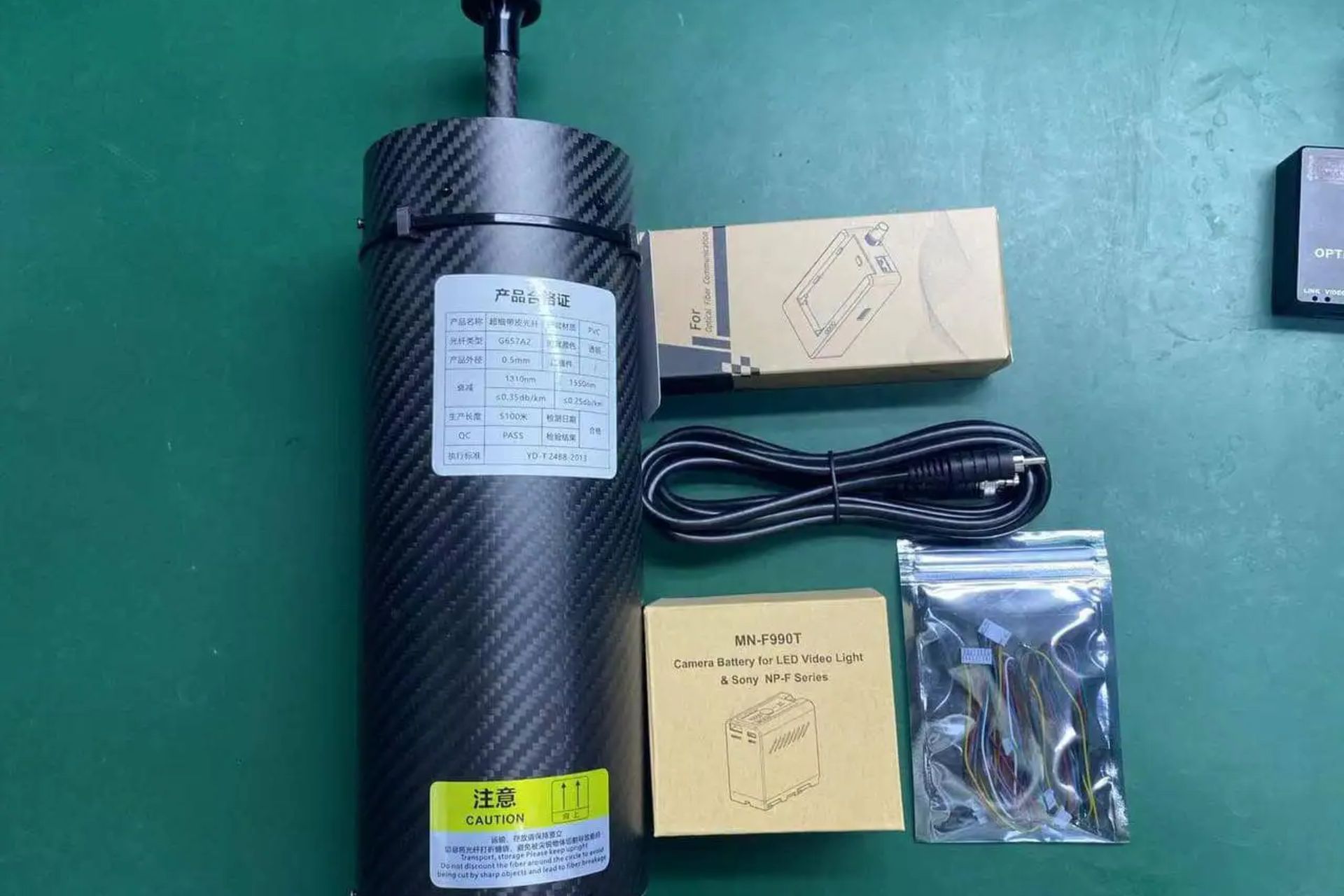Breaking News
Russian fiber-optic controlled FPV is not so Russian but Chinese.
Ukrainian radio technology and drone pilot specialist since the Russian military action, Serhiy Beskrestnov (also known as Serhiy Flash), has challenged Russia's claim that it is developing a new fiber-optic controlled drone, suggesting that the unmanned aerial vehicle (UAV) might actually originate from China.
Follow Army Recognition on Google News at this link

FPV drone with different Optic fiber length adaptable to mission. (Picture source: Russian Telegram channel )
Beskrestnov's allegations highlight Russia's reliance on foreign technologies for its military operations, despite official statements to the contrary.
Several videos show heavy use of these drones since March 2024, with fiber optics as a control system for FPV drones presenting a solution to jamming and its effectiveness. The optical link is physical and thus limits drone movement and range, and previously negligible obstacles (buildings, windows, power lines, etc.) are now taken into account. It is not yet known if redundancy in case of a break is planned, nor if a radio link could serve as a backup system in case of fiber breakage.
Despite these drawbacks, which involve a flight trajectory more "ballistic" than a straight line close to the ground as with traditional FPVs, optical FPVs offer particularly interesting image quality. In the video at the end of the article, it is noted that there are over 50 constant FPS and very sharp resolution. This makes it easy to identify areas of interest and facilitates target designation.
In a post on social media, Beskrestnov stated: "There are discussions among enemy groups that the Russian optical fiber drone 'Vandal' does not exist. It is actually a Chinese drone purchased for $2,000." He also claimed that these drones could be bought for Russian military use at a significantly inflated price of $17,000, but no information corroborates these statements.
Russia has recently increased the use of optical fiber FPV drones in combat, with officials boasting that these drones are immune to electronic warfare (EW) countermeasures due to their lack of radio signals. Russian sources have already celebrated the launch of what they called the "Prince Vandal of Novgorod" drone, developed by the NPC Ushkuy company based in Novgorod. Russian military sources have stated that "no EW system can affect it, and the images captured are clear and intact."
According to Beskrestnov, this Russian innovation is actually a Chinese Skywalker drone, marketed and known for its fiber optic capabilities. Unlike traditional drones, which can be jammed by electronic warfare systems, fiber optic drones remain resistant to such interference, as they rely on a physical cable for control, rather than radio frequencies. Additionally, these drones are undetectable by most drone detectors due to the absence of radio command and video transmission signals.
Russia's dependence on these drones and their components manufactured abroad further underscores the country's difficulties in developing cutting-edge technologies independently, despite public claims of innovation and self-sufficiency.

Chine made cablery and optic fiber presented as part of Russian FPV ( Picture source: Pro Russian Telegram channel )


























